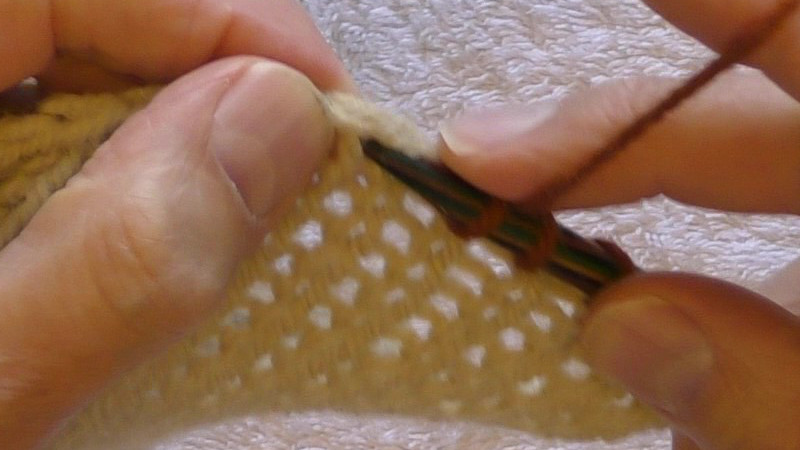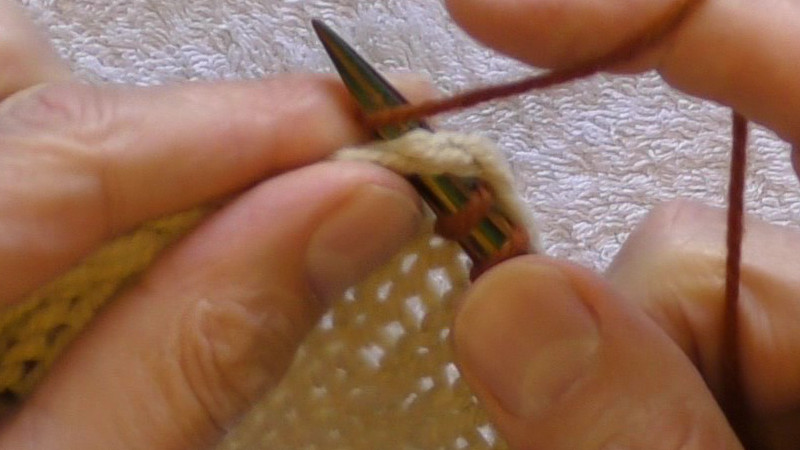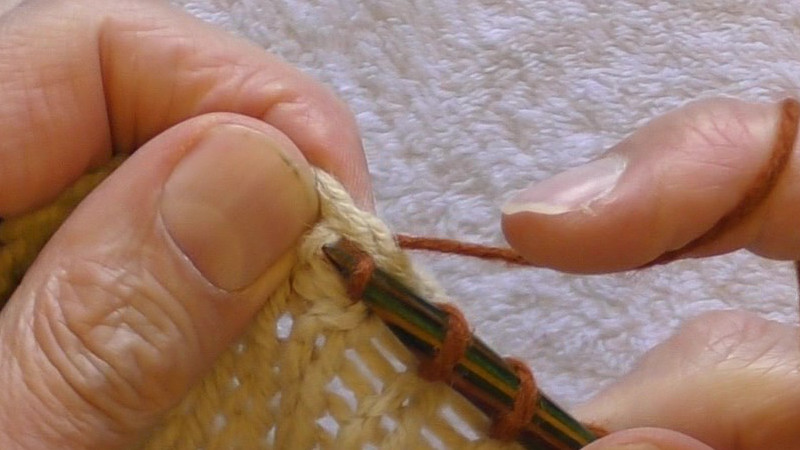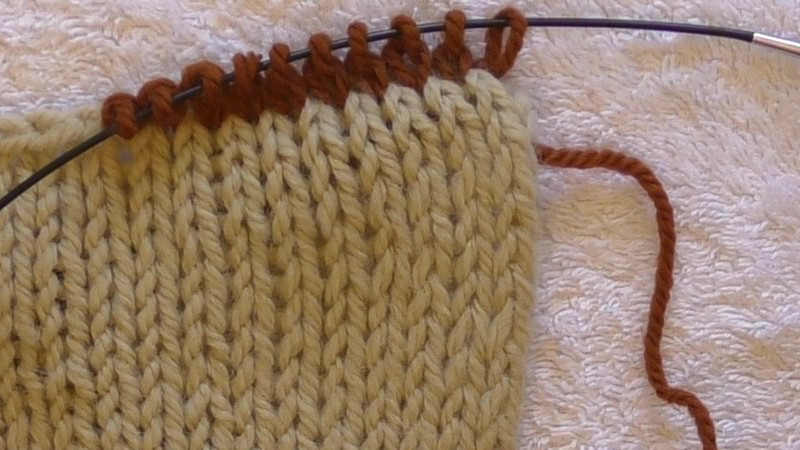Also known as: Pick up stitches on a bound-off edge, Pick up stitches on a bind-off edge
Context
Picking up stitches allows you to create a continuous fabric by knitting new stitches onto existing ones. Exactly how you pick up the stitches depends on where on the fabric you are picking up the stitches, where the new row of stitches will lie relative to the original fabric, and the stitches used in the original fabric and the new fabric to be created from the stitches you have picked up. This article describes how to pick up stitches from a cast-on or cast-off (bind-off) edge.
You can find instructions for picking up stitches in other contexts in these related atricles.
- Pick up stitches at a garter stitch edge.
- Pick up stitches at a stocking stitch edge.
- Pick up stitches on the body of fabric.
- Pick up stitches at a steek.
How to do it
Your pattern will usually tell you how many stitches you need to pick up, but may say “pick up stitches evenly”. If you would like help working out how to distribute your new stitches (or work out how many stitches you need to pick up), you can find more information in the article “Strategy for picking up stitches“.
In this article, the British term “cast-off” is used. This has the same meaning as bind-off (or bound-off, depending on the context).
These instructions form the new stitches on the needle held in your right hand. In the photograph, the original fabric is the light colour and the new fabric (and working yarn) are the dark colour.
You will be working into the row of stitches immediately below the cast-off edge. Hold the needle in your right hand. This should be the needle that you will use for new fabric. Work with the yarn held behind the fabric.

Hold the original fabric in your left hand and spread the stitches near the cast-off (bind-off) edge slightly to make it easier to see where to insert the needle.
Place the needle through the centre of the next stitch that lies immediately below the cast-off edge. This will leave the chain of the cast-off edge lying over the top of the needle.

Wrap the yarn around the needle in the same way as a knit stitch.

Swing the right hand needle back to the public (right) side of the original fabric, drawing a loop of the working yarn with it. Leave the loop on the needle to form a stitch.
The working end of the yarn should be the leg of the stitch that is the far side of the needle,

Continue until all the stitches have been picked up.
The photograph shows new fabric that has been built on stitches picked up from the cast-off edge of stockinette fabric. One row of stockinette has been knit after the stitches were picked up. The columns of stitches in the new fabric line up with those of the original fabric.
Additional consideration when picking up stitches from a cast-on edge
If you are picking up stitches from the cast-on edge, you have a choice. You could pick up the stitches from the middles of the stitches in the original fabric (like above). This would give you the same number of stitches across the new and original fabrics (and therefore the same width), but because you are knitting in the opposite direction the stitches will appear to be offset by half a stitch.
You could, however, pick up the stitches in the gaps between stitches in the original fabric. This would make the columns of stitches appear to line up, but you would have one less stitch across the new fabric than in the old fabric.
Your pattern may recommend one approach over the other – and if the numbers of stitches in the original and new fabrics have to be the same, then you should pick up through the centres of the stitches.


